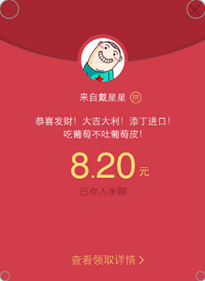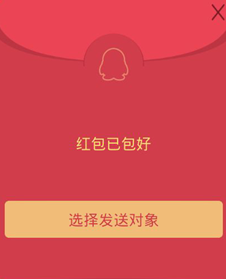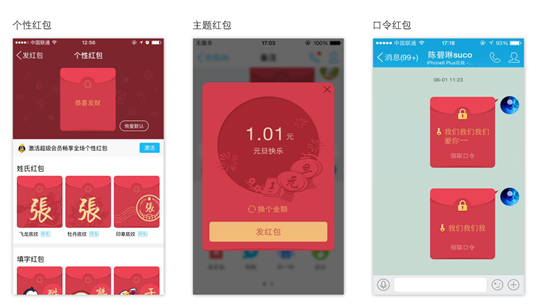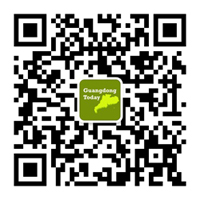Chinese people's enthusiasm for the century-long tradition of sending "red envelopes" stuffed with cash to families and friends in special time have been rekindled in the digital age.
WeChat, a popular calling and messaging app, for years has extended its dominance in Chinese New Year communication, as well as red envelope-exchange with its digital wallet.
But this year, the app launched its "Holiday Red Envelope", allowing users to add well wishes and stickers to a money gift in a customized gift package.
WeChat's official data show that people born in the 1990s led the red envelope blitz on Monday night, which was Chinese New Year's Eve.
People in this age group both sent and received the most red envelopes on that night.
Beijing, Chongqing and Guangzhou are the top three cities where red envelope-exchanges were the liveliest, according to WeChat data.
WeChat also saw the busiest new year wish-exchange from 8 pm to 9 pm on Monday night, coinciding with the first hour of the roughly four hour-long Spring Festival Gala, a must-see TV show for most Chinese families over their reunion dinner.
Tencent's Graphical User Interface (GUI) for mobile apps
Traditionally, Chinese people give red envelopes filled with money, known as "Hongbao," to friends and relatives during Chinese New Year.
Tapping into this tradition, Tencent enabled users to send and receive these red envelopes on their smartphones. It has since become somewhat of a cultural phenomenon.
Statistics show that 18.3 billion people (person-time) have exchanged red envelopes on mobile QQ since the patent was applied to the platform, with especially high volumes during Chinese festivals.
WeChat showed some 230 billion messages sent via the app from Feb 15th to 20th, this year, with a whopping 768 million people using the red packet service.
The digital red envelope has become a useful way for people to both send their wishes to friends and relatives or even just day to day payment.
The GUI receiving the award was designed for this digital red envelope feature of Tencent’s social media platforms like QQ and WeChat. Every detail of the design is centered around providing a better user experience, through a simple interface.
The GUI captures the feeling of sending or receiving a real red envelope.


There is a subtle shadow effect on the cover and the bottom of the red envelope lending a three-dimensional feel, and showing that the red envelope is unopened. Lively, eye-catching yellow is used as secondary color to highlight transaction value in the red envelope.

Furthermore new forms of red envelopes such as "short video envelopes”, “voice password envelopes” were introduced to cater to more users and more occasions.
By the end of May, 2018, the number of patent applications for Tencent had reached 16,000, with over 6,000 authorized patents in China. It has 7,000 items filed for Patent Cooperation Treaty (PCT) international patents and over 1,000 items are patented in America.
(Source: Chinadaily, Newsgd.com)




